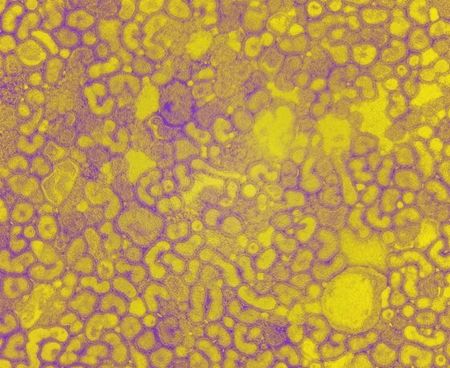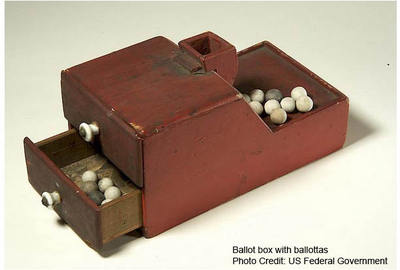December 19, 2012 at 11:15 am
Published by Stanford Blood Center
By Dave Emberson
We introduced you to Dave recently in his article titled Feeling Better, But Isolated. Dave was diagnosed with acute lymphoblastic leukemia (ALL) in July and has been an active advocate for blood donations at our Santa Cruz Yacht Club blood drive.
The current state-of-the art treatment for acute lymphoblastic leukemia patients is the bone marrow transplant. Be the Match, the National Marrow Donor Program is a great site that explains the process and how to register as a donor. The donor is sent a saliva swab kit and some questions about his or her medical history. The main thing is to get as many people in the database as possible.
December 14, 2012 at 10:36 am
Published by Stanford Blood Center
By Billie Rubin, Hemoglobin's Catabolic Cousin, reporting from the labs of Stanford Blood Center
Ordinarily, a mosquito bite is just an annoyance with an itchy red spot and a lot of scratching involved. But those little creatures can transmit malaria (in known malarial areas) and the West Nile virus right here at home.
December 12, 2012 at 10:37 am
Published by Stanford Blood Center

By Lia Steakley, Writer for Stanford School of Medicine's Communications & Public Affairs Department
This article was adapted from material provided by the Stanford University School of Medicine. Click here to be taken to the original article.
Back in September, Lucile Packard Children's Hospital broke ground on its 512,000-square-foot expansion, which will add 150 patient rooms, more treatment areas and the newest in medical technology. The current issue of Stanford Medicine Newsletter includes a story that lays out the plans for the new addition, which is scheduled to open in December 2016.
December 3, 2012 at 4:26 pm
Published by Stanford Blood Center
By Julie Ruel, Social Media Manager, Stanford Blood Center
When accessing your online donor account, you now have the option of using a username of your choice, rather than your donor ID number. Creating your username is simple and straightforward here's how it works:
November 29, 2012 at 11:59 am
Published by Stanford Blood Center

By Julie Ruel, Social Media Manager, Stanford Blood Center
Menlo Park, the home of such companies as Facebook, SRI International, and Sunset Magazine, is welcoming Stanford Blood Center to their community. On December 10th, the new center, located at 445 Burgess Drive, will be fully operational.
November 20, 2012 at 2:01 pm
Published by Stanford Blood Center
By Dave Emberson, blood recipient
Okay, I will admit to having a bit of a meltdown on a recent Thursday evening when I got the news about having to go the transplant route, but my loving wife got me through it by forcing me to take lots of drugs and go to bed. God bless her.
November 13, 2012 at 10:06 am
Published by Stanford Blood Center

Beth Kanter is the author of Beth's Blog: How Nonprofits Can Use Social Media for Social Change, Visiting Scholar at the David and Lucile Packard Foundation 2009-2013, and internationally recognized speaker and trainer. She is co-author of the highly acclaimed book, The Networked Nonprofit, published by Wiley in 2010, with Allison Fine and the recently published, "Measuring the Networked Nonprofit," with co-author KD Paine.
Beth will be speaking at our next Cafe Scientifique on Thursday, November 15th.
I'm thrilled to announce the publication of my second book, "Measuring the Networked Nonprofit: Using Data to Change the World," with co-author and measurement goddess KD Paine. The book is about how nonprofits can measure and improve results from leveraging their networks. The frameworks and tips we outlined were field tested in real-time as part of my work as Visiting Scholar at the Packard Foundation with 60 of their grantees who participated in a peer learning/focus group and contributed many of the case studies.
November 8, 2012 at 9:54 am
Published by Stanford Blood Center

By Lia Steakley, Writer for Stanford School of Medicine's Communications & Public Affairs Department
This article was adapted from material provided by the Stanford University School of Medicine. Click here to be taken to the original article.
The image above may look like a piece of abstract art, but it actually depicts influenza A. One of the three flu virus types responsible for the fatigue, fever and other symptoms that plague many of us from October to May, influenza A can infect people, birds and other animals.
While the 2011 influenza season was especially mild, that may not be the case this year. To help you and your family prepare for the flu season, we asked Corry Dekker, MD, medical director of the Stanford-Lucile Packard Children's Hospital Vaccine Program, to respond to your questions about the flu and vaccine research.
November 6, 2012 at 10:47 am
Published by Stanford Blood Center

By Billie Rubin, Hemoglobin's Catabolic Cousin, reporting from the labs of Stanford Blood Center
Ballot comes from the Italian word, ballotta or little colored ball. Several hundred years ago, ballottas were used to cast votes (if their candidates did not win, did they throw the balls at each other?). Each voter would drop either a white ball (in favor of the candidate) or a black ball (opposing the candidate) into the ballot box. Paper ballots were first used in North America in 1629 and later became widespread.
October 31, 2012 at 9:40 am
Published by Stanford Blood Center

By Billie Rubin, Hemoglobin's Catabolic Cousin, reporting from the labs of Stanford Blood Center
Vampire bats feed on the blood of other creatures, a hematophagy diet. There are three bat species whose only source of nutrition is blood: the common vampire bat (Desmodus rotundus), the hairy-legged vampire bat (Diphylla ecaudata), and the white-winged vampire bat.






